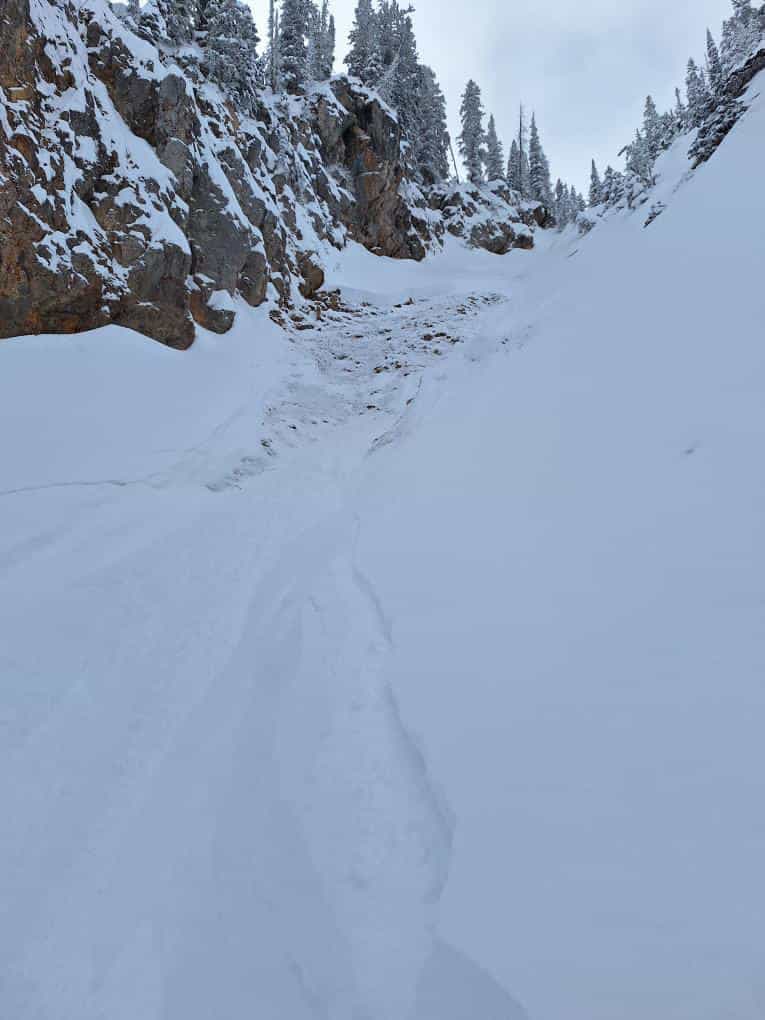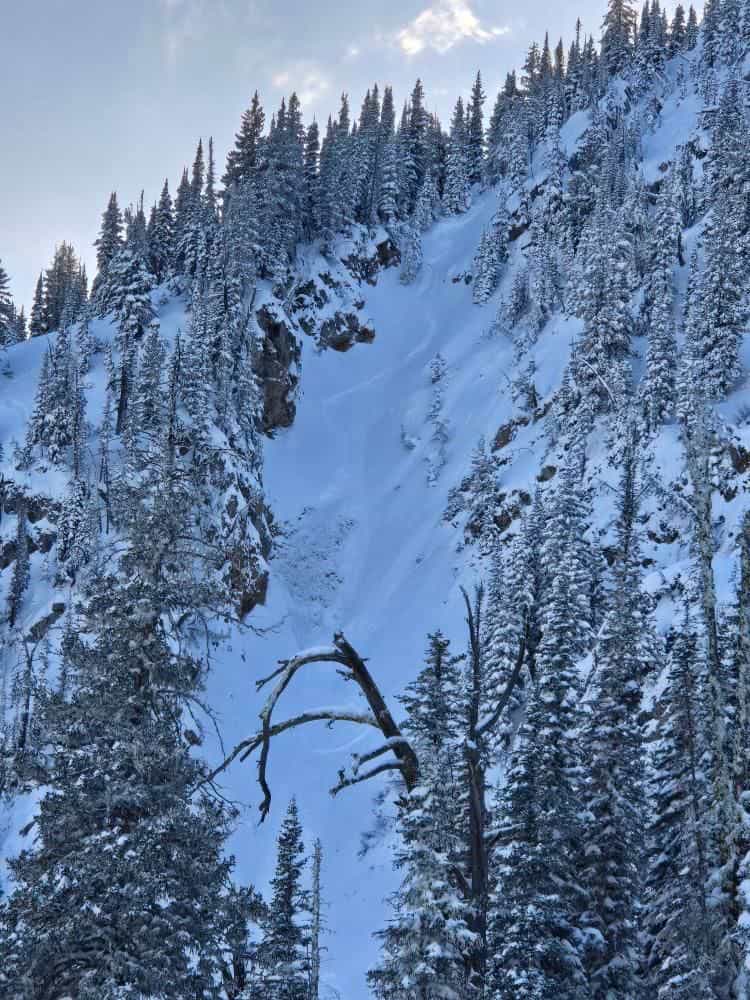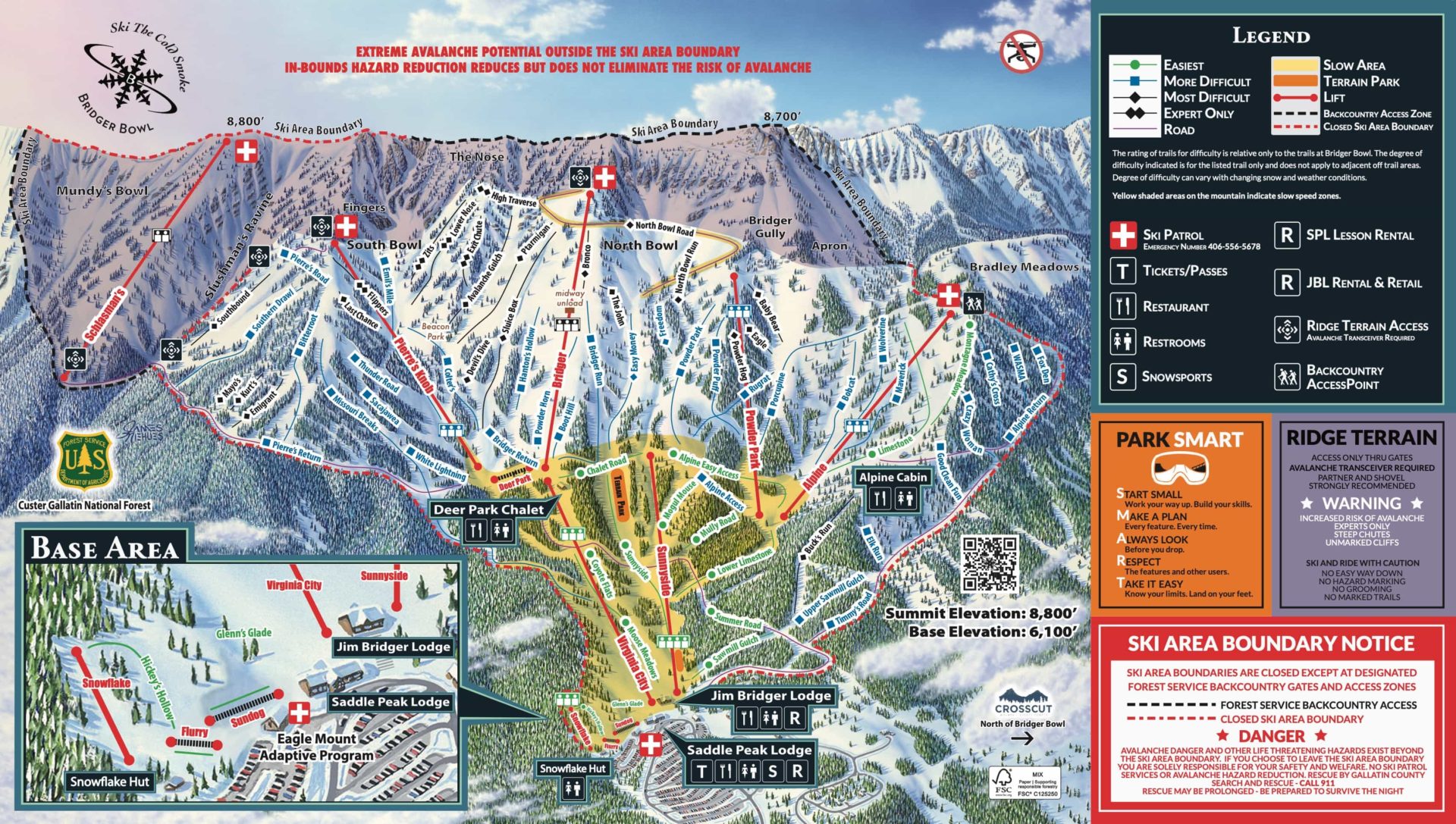
A skier triggered an avalanche in Super Couloir at Bridger Bowl, Montana, on Wednesday, November 6. The slide measured 2 to 2.5 feet deep, 20 feet wide, and traveled approximately 500 feet. No injuries were reported.
“Skier triggered Pocket in super couloir. Wasn’t very unexpected, the skiers left side felt a little slabbier than the skiers right and tried to stay off. Triggered going over a sharky rock spot, not very fast moving and easy to ski out of. Snow depth was 2-2.5 feet.”

The GNFAC issued a statement emphasizing that Bridger Bowl currently presents backcountry conditions. “There are no Ski Patrol services or rescue,” the center warned, advising skiers to be equipped for self-rescue.
“Hey guys – my partner broke off a small avalanche in super couloir today… broke full depth across half the couloir, 2-3’ deep/20’ wide and looked like it ran around 500’. No one was caught. He might message you with pictures too but here’s a video from the top.”
– Message sent to GNFAC
Essential safety gear includes beacons, shovels, and probes. The GNFAC recommends skiing with a partner and calling 911 in emergencies.

The center relies on public observations to accurately assess avalanche danger. Skiers can submit reports via the GNFAC website.
Early-season snowpacks pose significant risks, including potential trauma from hidden obstacles beneath thin snow cover.
“Expect and prepare for avalanches within the new and wind-drifted snow. Slides will be likely at the tail end of this week’s storm, especially around Bozeman and Big Sky, where the most snow fell and winds gusted 40-60 mph. Without additional loading, stability will improve throughout the week. However, uncertainty is high this time of year as we learn the specifics of a new snowpack. Employ an information-gathering mindset and a healthy distrust for steep snow-covered slopes. Signs of instability, such as recent avalanche activity, shooting cracks, and collapsing, are red flags and reasons to avoid avalanche terrain. Dig a quick snowpit to assess for instability when obvious signs are not present.”
– GNFAC forecast for 11/6/24
